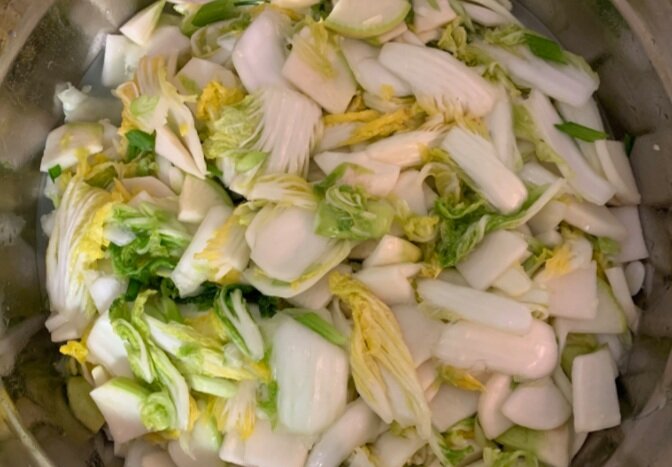찬 Chan
'찬(饌)' 은 술과 함께 즐길 수 있는 음식이다. 대개 '반찬(飯饌)' 을 줄여 찬이라고 한다.
'반(飯)' , '찬(饌)'.
술을 말하면서 찬이란 절을 따로 개설한 이유는 한국의 술은 늘 음식과 함께 하기 때문이다. 사실 현재 우리가 일상에서 쓰는 반찬이란 말은 원래 의미와는 좀 차이가 있다. 우리가 기본이라고 여기는 김치와 국, 찌개 등은 반찬으로 셈하지 않았다. 한국어의 백반이란 말을 글자 그대로 흰밥이라고 해석해선 안된다. 백반이란 밥과 국을 기본으로 하여 간장, 된장, 청국장 같은 장(醬)류와 김치, 겉절이, 장아찌와 같은 지(漬), 그리고 초(醋)가 있는 밥상을 일컫는다. 즉, 특별한 요리가 없는 매우 소박한 상이다.
그러나 언어란 대다수가 쉽게 이해할 수 있어야 한다는 측면에서 이 “찬” 이란 절에는 밑반찬과 요리를 모두 포함시켰다. 또한 이 절에 다룰 찬의 재료는 미국 로스엔젤레스에서 철 따라 쉽게 구할 수 있는 것들을 썼다. 진정한 의미의 한식이란 한국에서 나는 식재료만을 가지고 전통적인 한국의 조리법에 따른 것만이 아니라는 생각이 든다. 세계 어느 곳에서든 그 지역에서 찾을 수 있는 식재료를 이용해 한식에서 느낄 수 있는 호흡과 소통, 변화, 섞임 같은 한국 식문화의 기본 정신이 토대가 되어야 한다. 이렇게 마련된 음식이야말로 21세기를 선도할 진정한 의미의 한식, 한식문화라는 것을 이 페이지를 통해 공유했으면 하는 바람이다..
'Chan' is short for Banchan. Many people who have visited Korean restaurants before would probably describe Banchan as “side dishes” or “appetizers". However, it is neither: Chan is neither a supporting role nor a prelude to a meal, but is actually a crucial element in Korean cuisine - the main focus, even - when prepared properly.
Chan is a designated section on this website because Suul is always enjoyed with Chan. The definition of Banchan, in the traditional sense, is quite different than how it is understood by most Koreans today. In fact, the banchan found in many modern Korean restaurants (kimchi, namul - blanched vegetables seasoned with vinegar, gook - soup, or jjigae - stew with soy bean paste) are not considered to be ‘traditional’ banchan.
Dishes that are made with soybean sauce/paste are called 장 (Jang, 醬). All kinds of kimchi and other preserved vegetables are represented by the term, 지 (Ji, 漬). And lastly, 초 (Cho, 醋) are blanched or raw vegetables, dressed with vinegar. These three categories of food make up Mitbanchan, or 'base' banchan. Meanwhile, 'Baikban' is a word that literally translates to ‘white rice’, but is also used to describe a basic meal. So, the word 'Baikban' represents a humble Korean meal of mitbanchan (base banchan) and rice without ‘proper’ banchan, which refers to larger dishes such as bulgogi (marinated beef) or sangsunggim (baked fish), which are now typically labelled as main courses in many restaurants.
Over the years, the term 'banchan' took on a broader meaning to include mitbanchan (base banchan) within its boundaries. Therefore, the Chan section on this website will include kimchi, namul, jjigae, and many more dishes that, like the Suul recipes on this website, highlight ingredients that are seasonally obtainable in the Los Angeles area. This decision was made in light of the idea that Korean cuisine in the 21st Century should not be defined as strictly traditional Korean dishes, prepared using time-honored ingredients native to Korea, but rather as a cuisine that is adaptable to the ingredients of any region in the world. The true defining factor of Korean food is not the authenticity of the ingredients that it is composed of, but the spirit of the one who prepares it - a spirit that embodies the traditional Korean culinary values of 'flow', ‘transparency,’ ‘convergence', 'metamorphosis', and 'balance'.





